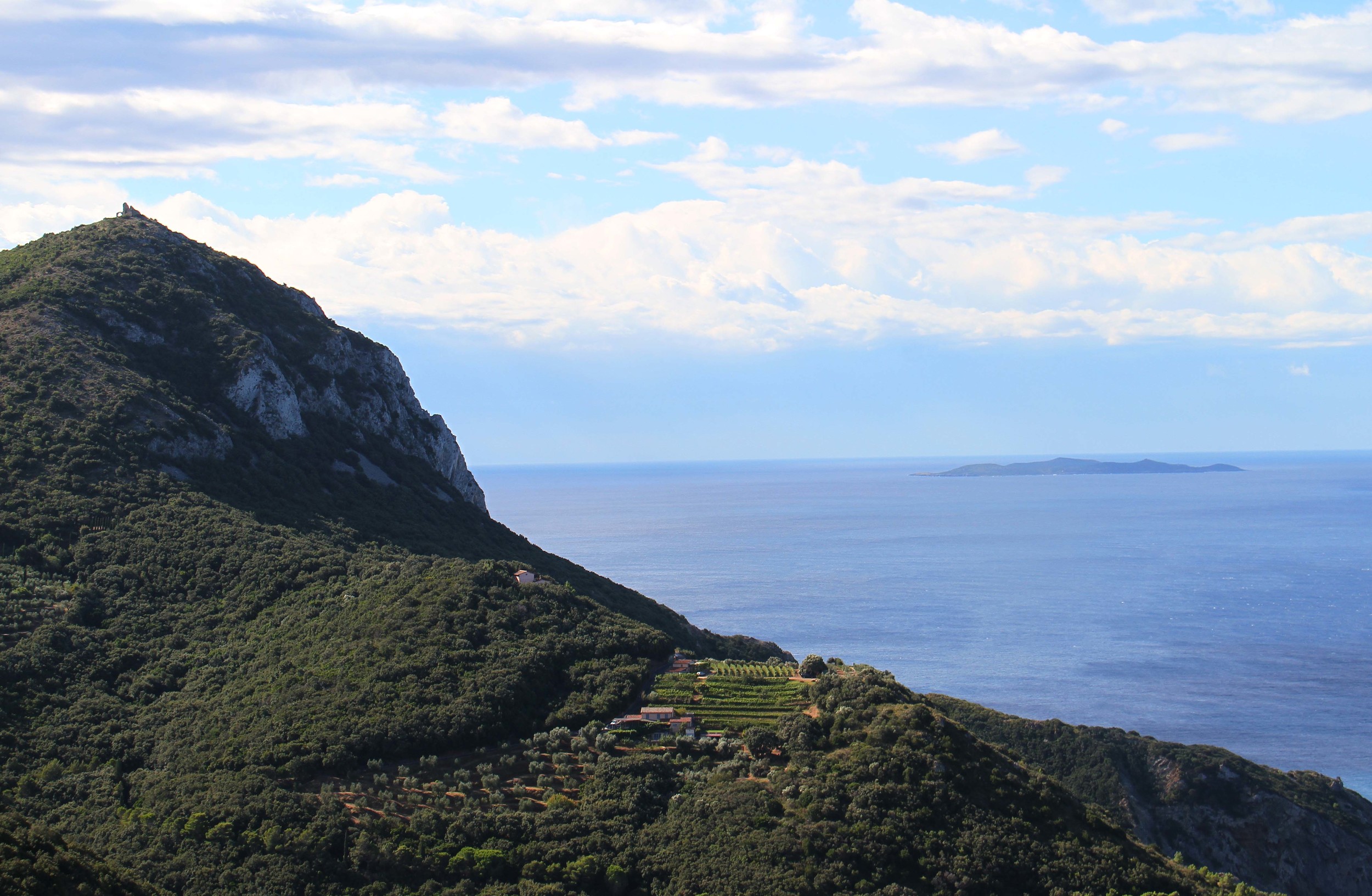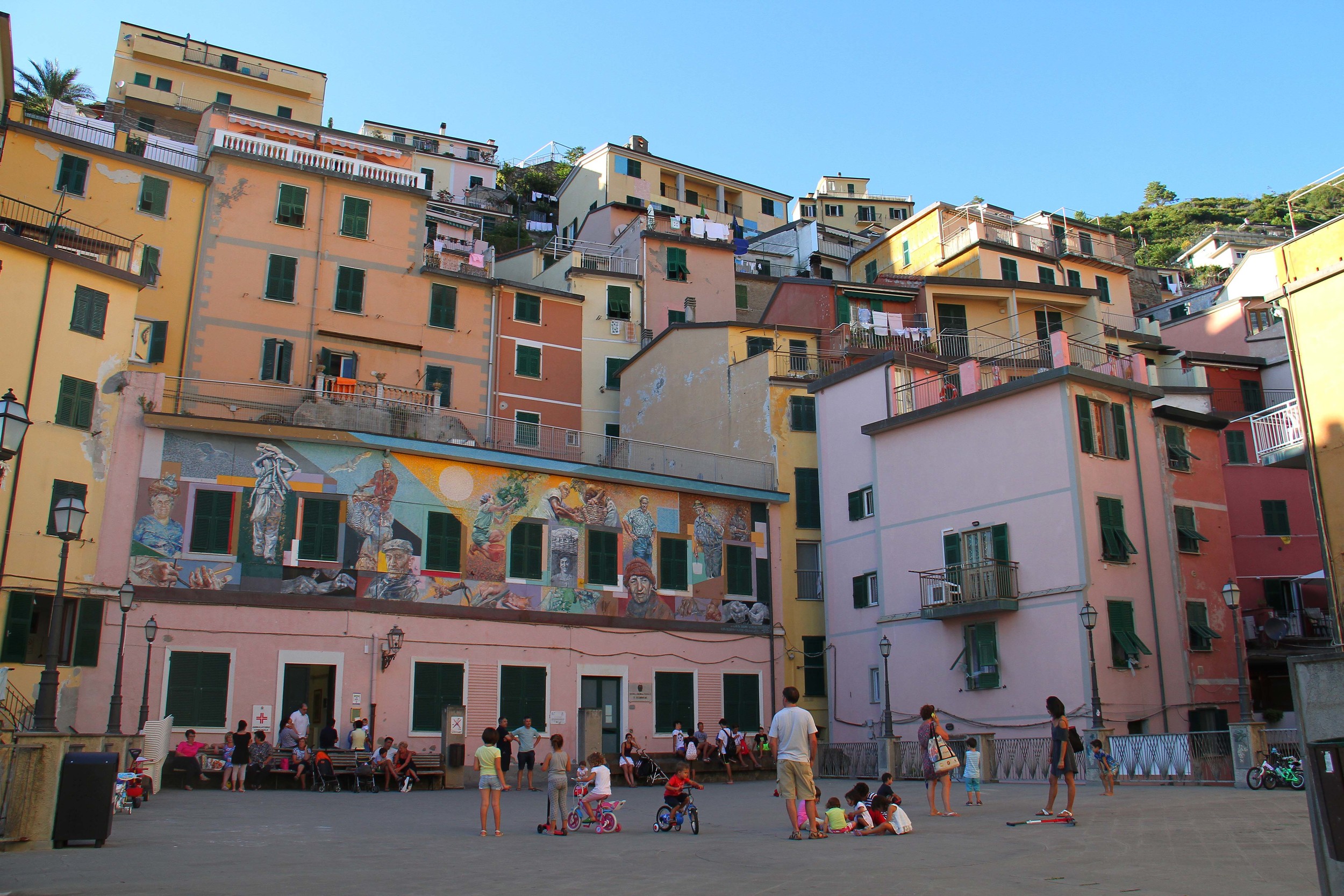Italy: Tuscany and Liguria
Italy was my official farewell-to-summer, oh-hello-fall, so I thought I'd reminisce a bit. Also I promised more last post, though it was so long ago no one remembers.
Pitigliano is a medieval city built on volcanic rock, with an old synagogue and Jewish quarter. You can explore the synagogue, but there's not much to see, and the cemetery was closed when we were there. The Jewish community was established in the 15th century by people fleeing papal persecution in Rome, but now there are few, if any, Jews left in the town. For us, the best part about Pitigliano were the Etruscan caves below the hills of the city. Unlike the caves in other towns, such as Orvieto, these are a free-for-all -- no admission fee or guide required. Simply hike the paths on the outskirts of town, and you'll stumble upon them. They'd make great places to camp.
And speaking of, camping in Italy is weird. It's like KOA times ten. (Ever heard of the "glamping," i.e. glamorous camping?) Everyone had these mega-tents, with electricity and multi-rooms.The campgrounds (there were several different companies, all with their own compounds) were right across from the public beach, so people stayed in the tents for weeks, crossing the road every day to go to the beach. Each compound comes with a general store, restaurant, big stage, family activities and bad American pop-music. It reminded me of some quaint resort, the kind of place upper middle-class Americans went during the post-war boom (think Dirty Dancing). It's expensive, too -- roughly $50 per night for us to pitch our tiny, claustrophobic, non-electric tent.
(Of course, the one time we took them up on their overpriced offer, it rained and our tiny tent leaked.)
Saturnia was one of the highlights of my trip. It's an entire river of hot (okay, really, more warm) mineral springs, set against the backdrop of the Tuscan hills. There are falls and natural whirlpools, which provide a variety of water-massages and privacy, despite the fact that this place is crawling with people. Best of all, it's free! If I lived here I would go all the time.
This is our little swimming nook, on the island of Giglio, which was all the more fabulous because it was never part of any official plan. We were trying to find the "untamed rocky beaches" (thus dubbed by Lonely Planet) of west Monte Argentario, but after guiding our little rented Fiat around sharp curves with gorgeous views and straight drop-offs for hours, we realized they were all privately owned or accessible only by boat. The vacationing Italians all seemed to take the ferry to Giglio. My traveling partner, Bruce, didn't want to go to Giglio. He worried it would be cheesy and touristy. But we were getting nowhere and we were loath to waste the day, so we risked it.
Giglio was magical. We knew nothing at first, but later befriended a couple who told us it's made up of three different towns. The ferry dropped up in Giglio Porto -- replete with candy-colored buildings and red-tile roofs -- where we got a map and headed out in search of an official beach. But after walking about 20 minutes, we saw this cove and a narrow rocky path with desert fauna.
The path led down. Illicit is always better, right?
There was a single man down there, sunbathing on a rock. We spent the afternoon leaping off rocks and swimming in the icy, clear perfection of the Tyrrenhenian Sea. The waves were gentle, so I swam far out, floating on my back and gazing at the layers of mountains and immediate cliffs and scattered houses. (I am the best floater I've ever met. It's one of my odd talents, right up there beside being able to pee anywhere, anytime.)
After swimming, we hiked just over an hour to reach Giglio Castello, which is actually a town, not a castle, like we expected. The landscape and the plants reminded me of the California coast, except that, interspersed among the dusty, rocky, thorny patches, there were deep, dark forests that made me think of Renaissance fairs and reminded me that we were seeking a castle.
Castello, a walled city that appears to rise from the ruins of a castle, is insanely charming. We forgot all about catching the last ferry back. We wandered the maze of streets and chased each other through the open plazas. Then we asked directions from a young couple I recognized from our ferry. They helped us find a boarding house, and we all drank local wine and ate savory biscotti and talked about how cruise ships are unloading thousands of tourists each day and making Venice sink faster.
Twilight set in, and we relocated to a small table lodged in the street next to a cheap cafe that served big decanters of wine and fried everything -- fried riced balls and zucchini flowers and other stuff I can't remember. We compared American and Italian healthcare and talked about the history of Italy (I had no idea it officially became a country as recently as 1861), and we laughed, and it grew cold, and the British waitress brought us "jumpers" (hoodies) to borrow, and then we walked the couple to their bus, because they were staying in the third town, Giglio Campese, which we never saw.
The next day, we hiked back, caught the ferry and drove to Riomaggiore, the first of five fishing villages that make up Cinque Terre. Riomaggiore is houses piled upon hills and impossibly steep garden paths leading to the other villages. Bruce remembered it from a visit 18 years ago, which is why we took the room at the first boarding house we came to. Apparently, 18 years ago, there were few boarding houses and fewer tourists and finding a place to stay was tough. Now it seems that everyone is leasing out a room or two, and there are more tourists than natives. (Head's up -- if you want to eat at the twinkly restaurant on the water with the best prices and most interesting menu, you'll have to make a reservation. We didn't and ended up eating bland seafood inland. At least the set-up was still charming.)
Despite the crowds, the path we climbed just before sunset was nearly deserted, and it was interesting to peek at people's private gardens and laundry lines, to peer down at them lounging on patios in bathing suits, sipping wine, waiting for the sky to transform the water rosy.
We stocked up at a local bakery and grocery, buying stuffed breads, fruit and nuts and left early the next morning for the Apuan Alps.








